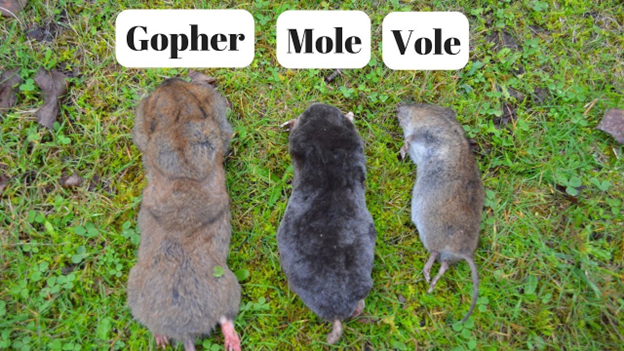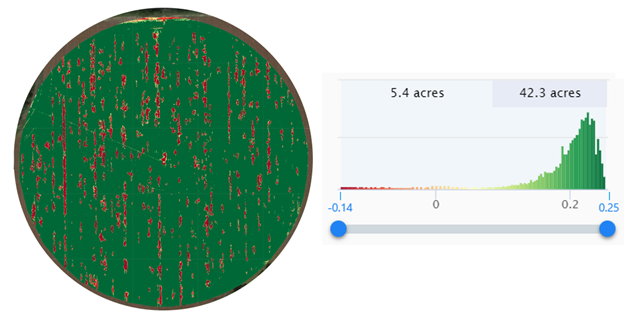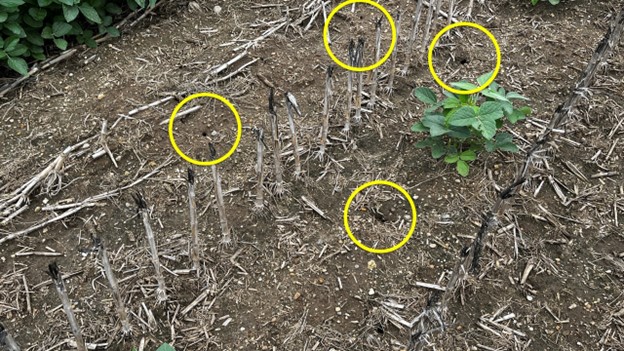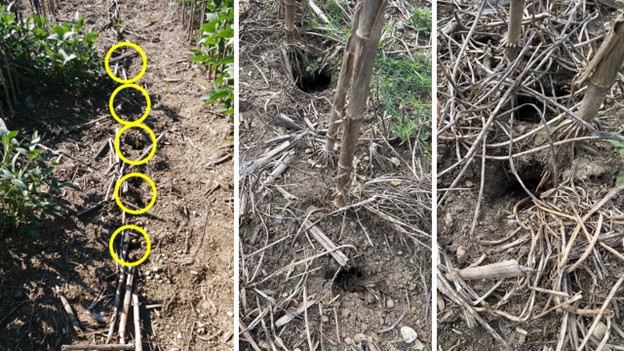Vole management on-farm study reveals surprising levels of soybean damage
An on-farm study conducted in southwest Michigan in 2022 and funded by the Michigan Soybean Committee provided insights into vole feeding in soybean fields.

Irregularly shaped voids first began appearing in soybean fields on a farm in southwest Michigan approximately four years ago. At first, the voids were small, no more than 10-20 square feet, but they grew in size in successive years to pickup truck-sized gaps. Then, in 2021, the problem in one field was so extensive that the entire field needed to be replanted. The farmer suspected that voles were the problem. So what exactly is a vole?
A vole (Microtus spp.) is a rodent, smaller than a gopher and slightly smaller than a mole. They are 4-6 inches long with short, stocky bodies, short legs and short tails, small eyes with ears partially hidden, and are typically brown or gray. There are a few species resident in Michigan, the meadow vole (Microtus pennsylvanicus) being the most common, but they all behave in a similar manner.

Voles typically feed on a wide variety of plants. In late summer and fall, they store seeds, tubers, bulbs and rhizomes. In soybean fields, they do the most damage feeding on seedlings as they emerge. They feed on lower new growth throughout the season, but soybeans are not typically impacted by such feeding once plants are well established. Few producers and consultants have reported problems with similar feeding in corn fields.
Voles create surface runways in dense plant growth or shallow burrows. Entrances to vole burrows are 1.5 to 2 inches in diameter and burrows do not push up the ground above them as with mole burrows. Voles can have three to five young per litter and five to 10 litters per year. Populations tend to grow and shrink cyclically every three to five years. Predators include snakes, foxes, coyotes and various raptors. Fields most susceptible to vole damage are those under no-till since burrows and nests are undisturbed. Additionally, fields with dense cover crops or weed growth into the spring are susceptible as the voles are protected from predators.
An on-farm study funded by the Michigan Soybean Committee compared different timings of cover crop termination: fall (simulating winterkill); 30 days before planting (considered early termination); and at planting, i.e., planting green. Field-length strips were 70 feet wide, and treatments were replicated four times and randomized in the field. A drone was flown over the field weekly until canopy closure to detect voids. The middle 35 feet of each plot was harvested and yields were compared.
A major challenge in conducting research with wildlife damage is that you don’t know how severe damage will be in a field in any given year, and that uncertainty impacted this study in 2022. There were fewer than 10 small voids throughout the entire field, and they did not coincide with any particular treatment. There were no statistically significant differences in yields due to the overall low pest pressure in the study field.
However, another field farmed by the same grower was significantly impacted by voles—see the aerial photograph above. This field was in a seed corn – soybean rotation under strip-till and planted to cover crops annually for the past 18 years. The area impacted by voles was over 10% of the entire field. Each void had between one and six burrow entrances, and the voids ranged in size from a few square feet up to about 100 square feet. The voids were often linear, following the rows of corn planted the previous season, and the burrow entrances were sometimes in line with corn rows. It should be noted that the damage could not be seen from the road, and the extent of the problem could only be seen from the air.



This on-farm vole management study is planned to be replicated in 2023 in another field on the same farm with a history of vole pressure. The study will also be conducted on another field located at Michigan State University’s (MSU) Kellogg Biological Station. It is important to identify best practices for managing voles under reduced tillage and cover crops so farmers can take advantage of these practices that build soil health without suffering yield loss from these rodents.
If you would like to learn more about voles, read “Wildlife Damage Management Series for Midwestern Farmers: Voles” from Michigan State University Extension (MSU Extension). You can also watch a short YouTube video showing more images of voles and their feeding in soybeans.
If you noticed irregularly shaped voids in your fields this year that could not be explained by other pests or management practices, visit those fields in early spring and look for signs of voles. If you suspect you may have a vole problem, contact your local MSU Extension office and they will put you in touch with a member of our field crops team for further investigation.
Thanks again to the Michigan Soybean Committee for supporting this research.



 Print
Print Email
Email